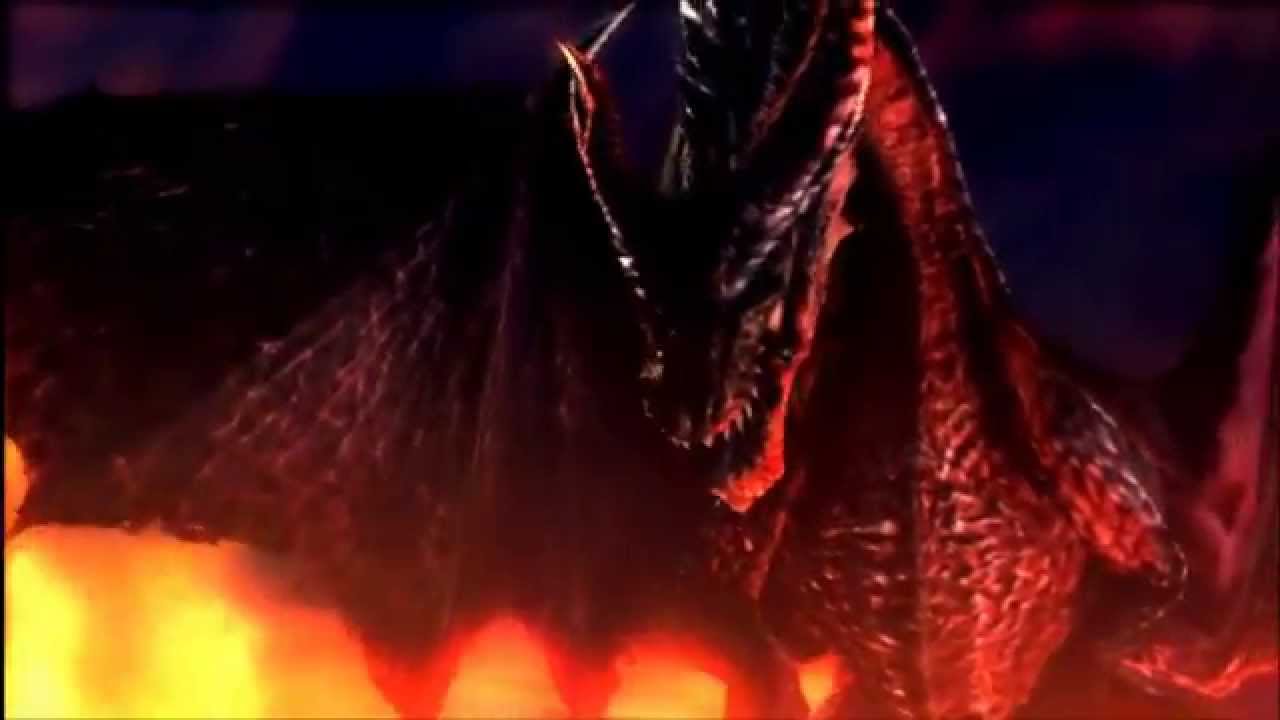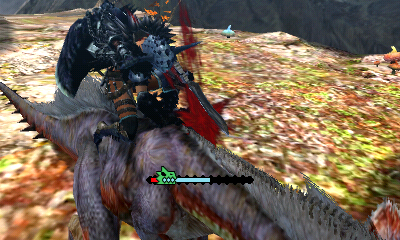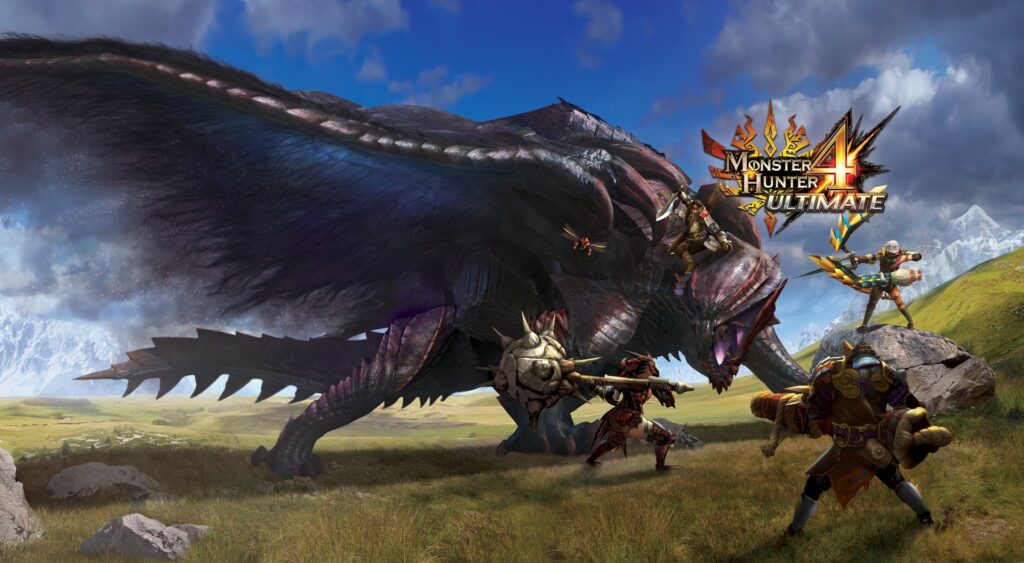
Monster Hunter has always been one of those series that has an intense cult following, but your average gamer tends to have littler experience with it, at least in the West. However, with the introduction of Monster Hunter Tri, that began to change, as more people had easy access to the game on Wii, and as one of the few critically acclaimed third party games on the system, Monster Hunter fell into more popularity in the West than ever before. Yet, despite all of that, Monster Hunter has remained incredibly true to it’s roots, even in the newest installment.
To begin, it’s important to note that Monster Hunter 4 Ultimate hasn’t made any real, significant changes that would make someone who hasn’t liked Monster Hunter before like it now. The whole series has always been a love it or hate it type of game, and that hasn’t changed. However, the gameplay is as tight and responsive as ever, and the changes and additions that were made heighten the series’ already signature style.
The most prominent gameplay change is the ability to mount monsters after knocking them down. This damages them greatly, and really helps with breaking parts off the various monsters, although it’s no help with cutting tails.
Built into the mounting mechanic is the improved ability to attack from midair, as well as overall improved maneuverability. 4 Ultimate has made climbing walls much faster than before, especially while using the leap to climb. Maps are outfitted with an incredible amount of verticality, and it comes into play now, as opposed to just being an annoyance, as it was before.
Using higher ground, you’re able to leap off and perform a mid-air attack. Once your attack damage surpasses a threshold, the monster will fall, allowing you the chance to mount it for more attacks. The small mini-game-like section that ensues is actually quite fun. You have to hold on while the monster bucks in an attempt to throw you, [or while it’s roaring, while hacking away when it’s not.]. If you manage to inflict enough damage during that section without being thrown, there’s a good chance that the monster will fall to the ground, leaving it open for more attacks, and that a part of the monster will break.
However, with all of the bonuses of the verticality come dangers, as well. The monsters are far more adapted to it, too. For example, many monster with ranged attacks, like fireballs or spit attacks, can and will take the higher ground and rain death upon you. Of course, the improved climbing mobility is used here to dodge fireballs and the like while climbing toward your target. However, the monsters’ ability to react to and use the verticality to their advantage is something never seen before that adds quite a bit to the game.
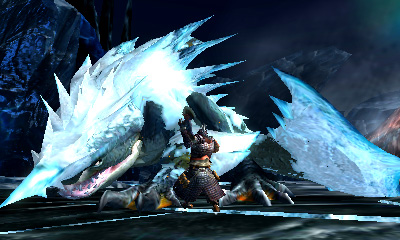
And in addition to the cliff-sides that we’ve all seen before, many areas now have two levels to them, with the ground on the first level, and webbing or ivy on top. Monsters often interact with the second level, hanging from the web, or poking their head through ivy to attack the ground below. Overall, the movement and verticality of the game is a new dimension for Monster Hunter to explore that is pulled off incredibly well here, unlike the disaster of underwater hunting that was featured heavily in Monster Hunter Tri, and Tri Ultimate.
All of the previous weapon types return, and two new weapon types are added to the arsenal. The new Insect Glaive features quick combos, similar in speed to the Sword and Shield. In addition, the player commands a Kinsect, a beetle-like bug that you can send out to harvest extracts from monsters during combat that will bolster your offense, defense, and stamina.
The second new weapon is the Charge Blade, which functions similarly to the Switch Axe, moving between a mid-speed combo Sword and Large Shield, and an Axe form. It makes use of cartridges that are charged through attacking, similar to, but not quite like, the Gunlance. The two weapons both offer completely new playstyles, and are welcome additions to the arsenal.
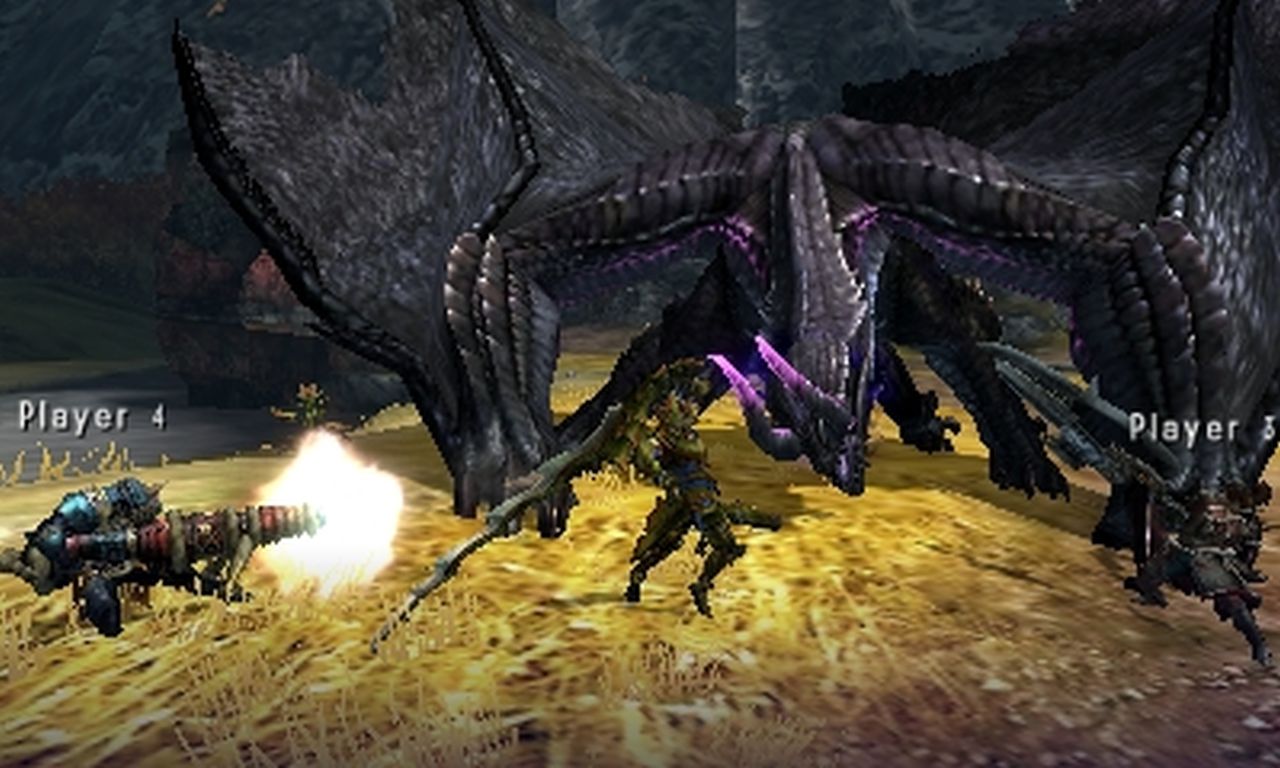
Some of the other weapons have been tweaked and revised, from damage profiles to move sets. Having tried it all myself, I don’t find any changes to be awkward or ill-advised, although some things certainly feel weird—the drawing attack for Sword and Shield has been changed, for example (although the original jumping attack does remain in the game, but is used as a separate attack instead).
One change that will be more hit or miss is the monster list. There are some really awesome new monsters in the game, like the Nerscylla (a giant spider) or the Najarala (a dangerous snake serpent) or even the Zamtrios (a four legged shark monster). The wyverns and dragons do not disappoint, either, especially the Gore Megala, the flagship monster for this installment.
And even better, several monsters from the older games that were removed in 3 and 3U are back, like Kirin, the Gypceros, all of the variety of -prey (like Velociprey), and even the legendary Fatalis! However, a number of the 3rd-generation monsters—basically all of the underwater hunts—have been removed, with a select few of the 3rd-generation monsters remaining, such as the Brachydios and the Zinogre.
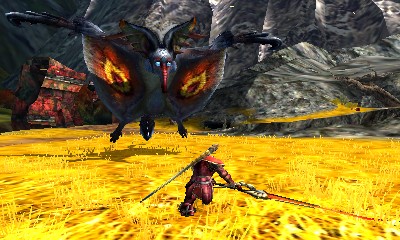
Another new expansion comes in the form of the singleplayer scene. There is actual story and travel in this game. There are several towns and cities you’ll visit over the course of the ‘campaign’, if it can be called that, and the story runs much deeper than ever before. It’s still nothing to write home about, but the improvement definitely makes the game feel vastly improved and is certainly a welcome change for the single player experience.
Adding to the single player experience, too, is the Expedition quests. There is an area you can access fairly early on in the game that is something like a rogue-like style dungeon, albeit incredibly simplified. Each time you go into an Expedition, the map changes. You can only see it one area at a time, and the map is a straightforward line. However, monsters that don’t have specific quests that require killing them and the like will appear here, with difficulty that matches your level.
In addition, the Expeditions are attached to the new Guild Quest system. When you hunt a new monster in an Expedition, you can unlock a Guild Quest to hunt that monster. And every time you do, the quest’s level goes up, making it more difficult, resulting in better rewards. These quests are able to be leveled to 140, which actually gets harder than G Rank quests, giving the game a new, ever-changing endgame.
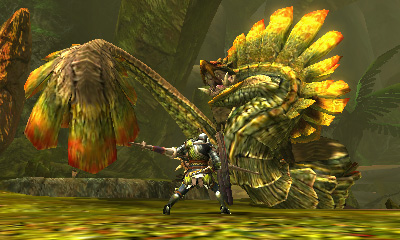
In addition to that, it’s in these guild quests and Expeditions that the player can come across rusted equipment, similar to the Ruststones of old. This equipment can be polished to be used, and generally has better stats than average armor, and random elements and skills attached. They are really quite awesome.
The last, and biggest, facet of the game is, of course, online play. In its basic form, the online content is unchanged, thankfully. You still team up with three other players to take down gargantuan monsters. It remains fun, challenging, and a great way to cheese your way through single player. The rooms for hunting and the process of searching for said rooms has been streamlined some, in order to better work with the 3DS’s capabilities. Some of the ease of finding a good room has been lost, however, as your search is far more limited on the 3DS than it was on a PS2 or the Wii U. However, the online portion still runs as smoothly as ever.
One issue that does crop up frequently online is the lack of communication. Despite the potential for voice chat, the developers chose not to implement it, and a number of problems were avoided with that decision, so I personally believe they made the right choice. Be that as it may, a handheld is simply bad for online communication. There are chat shortcuts for simple things like good job and telling people you’ve been hit with sleep or paralysis, but it still makes for poor community. And that’s something that will sorely be missed in Monster Hunter, as the community online has always been helpful and a great part of the experience.
Despite the problems in that regard that come with playing on a handheld, everything else runs well. I have been playing on an original 3DS (the old, fat one) with zero issues. While the camera movement is indeed difficult, it’s still easier than what Monster Hunter veterans are used to, no longer requiring “the claw”. However, having since purchased a Circle Pad Pro, I would highly recommend finding one if you plan on spending hours upon hours in this game. The addition of the second control stick for camera movement, as well as the improved trigger buttons makes the game feel smoother.
Either way, though, the Circle Pad Pro is not necessary by any means. The game will still run and play great, regardless of what 3DS system you have available – and it plays as well as it did on consoles.
Monster Hunter 4 Ultimate is one 3DS title that shouldn’t be passed up. It’s easily one of the best games for the system hands down, and it is a huge step toward Monster Hunter reaching perfection in its gaming genre. However, 4 Ultimate still is a Monster Hunter game, so those that have tried it before and hated it shouldn’t bother. But anyone new to the series will find that 4 Ultimate is a great place to start.
Monster Hunter 4 Ultimate was reviewed using a retail copy purchased by Niche Gamer. You can find additional information about Niche Gamer’s review/ethics policy here.
The Verdict: 9.5
The Good:
- The same Monster Hunter goodness we all know and love
- Additions to the gameplay have only enhanced the game
- Singleplayer content has been wildly improved
- Actual endgame content, past G Rank, has been added
- Some of the old monster favorites return
- Despite being on a handheld, online play functions very well
The Bad:
- Communication during online play is lacking and difficult
- 3D is difficult to use in a game that is typically played for long periods of time
- 3DS is potentially painful to hold/use for extended periods

